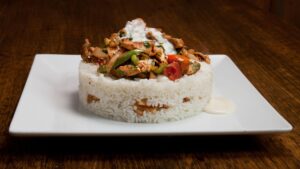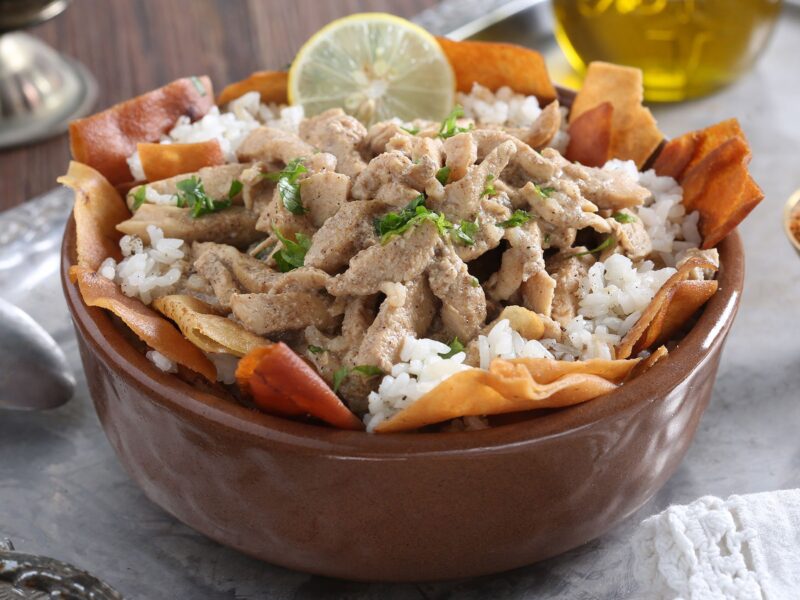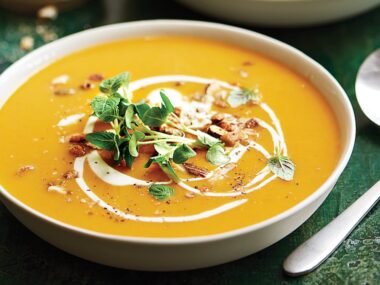Fatta, a beloved Egyptian dish, holds a special place in the hearts and stomachs of many. With its rich layers of flavors and textures, it stands as a testament to Egypt’s culinary heritage. In this exploration, we delve deep into the origins, ingredients, preparation, and cultural significance of Fatta, uncovering the secrets behind its hearty appeal.
Origins and History
The roots of Fatta can be traced back to ancient Egypt, where it was initially conceived as a simple peasant dish. Over time, it evolved into a cherished culinary tradition, enjoyed by people from all walks of life. The dish gained popularity during the Mamluk era (1250–1517 AD) and has since become an integral part of Egyptian cuisine, particularly during festive occasions and family gatherings.
Ingredients

At the heart of Fatta lies a harmonious blend of ingredients, each contributing to its distinctive flavor profile. The key components include:
- Rice: Long-grain rice, cooked to perfection, forms the base of the dish, providing a fluffy and aromatic foundation.
- Bread: Traditional Egyptian flatbread, known as “aish baladi,” is torn into bite-sized pieces and layered atop the rice, adding texture and substance.
- Meat: Tender pieces of lamb or beef, seasoned with a medley of spices, lend a savory depth to the dish, infusing it with rich, meaty flavors.
- Garlic-Tomato Sauce: A zesty sauce, crafted from ripe tomatoes, garlic, and a hint of vinegar, is drizzled generously over the layers, imparting a tangy kick and tying the dish together.
Preparation
The preparation of Fatta is a labor of love, requiring meticulous attention to detail and time-honored techniques. The process unfolds in several stages:
- Cooking the Rice: The rice is carefully washed and cooked until tender, seasoned with salt, and perhaps a dash of butter for added richness.
- Marinating the Meat: The meat is marinated with a blend of spices, which may include cumin, coriander, paprika, and cinnamon, infusing it with layers of flavor.
- Layering: In a large serving dish or tray, the cooked rice forms the bottom layer, followed by a generous scattering of torn bread pieces. Next, the marinated meat is arranged on top, creating a hearty centerpiece.
- Sauce Preparation: Meanwhile, the garlic-tomato sauce is prepared by sautéing minced garlic in olive oil until golden, then adding chopped tomatoes and a splash of vinegar, simmering until the flavors meld into a vibrant sauce.
- Assembly: The final step involves pouring the garlic-tomato sauce over the layered rice, bread, and meat, ensuring that every bite is infused with its bold flavors.
Cultural Significance
Fatta transcends its culinary role to embody cultural symbolism and social significance within Egyptian society. It is often served during festive occasions such as weddings, religious celebrations, and family gatherings, symbolizing abundance, generosity, and communal unity. The act of sharing a hearty serving of Fatta with loved ones fosters bonds of kinship and camaraderie, reinforcing the importance of family ties and hospitality in Egyptian culture.
Moreover, Fatta holds religious connotations, particularly during the Islamic festival of Eid al-Adha (the Festival of Sacrifice), where it is prepared using sacrificial meat from the ritual slaughter of livestock. This practice honors the biblical story of Prophet Abraham’s willingness to sacrifice his son, Isma’il, as an act of obedience to God. By incorporating the sacrificial meat into Fatta, families commemorate this sacred tradition and share the blessings of the occasion with those in need.
Conclusion: In conclusion, Fatta stands as a culinary masterpiece that embodies the essence of Egyptian hospitality, tradition, and gastronomy. From its humble origins to its revered status as a celebratory dish, Fatta reflects the rich tapestry of Egypt’s cultural heritage, inviting us to savor the flavors of the past while forging connections in the present. As we partake in the indulgent layers of rice, bread, meat, and sauce, let us appreciate not only the culinary artistry but also the timeless traditions that unite us around the communal table.










